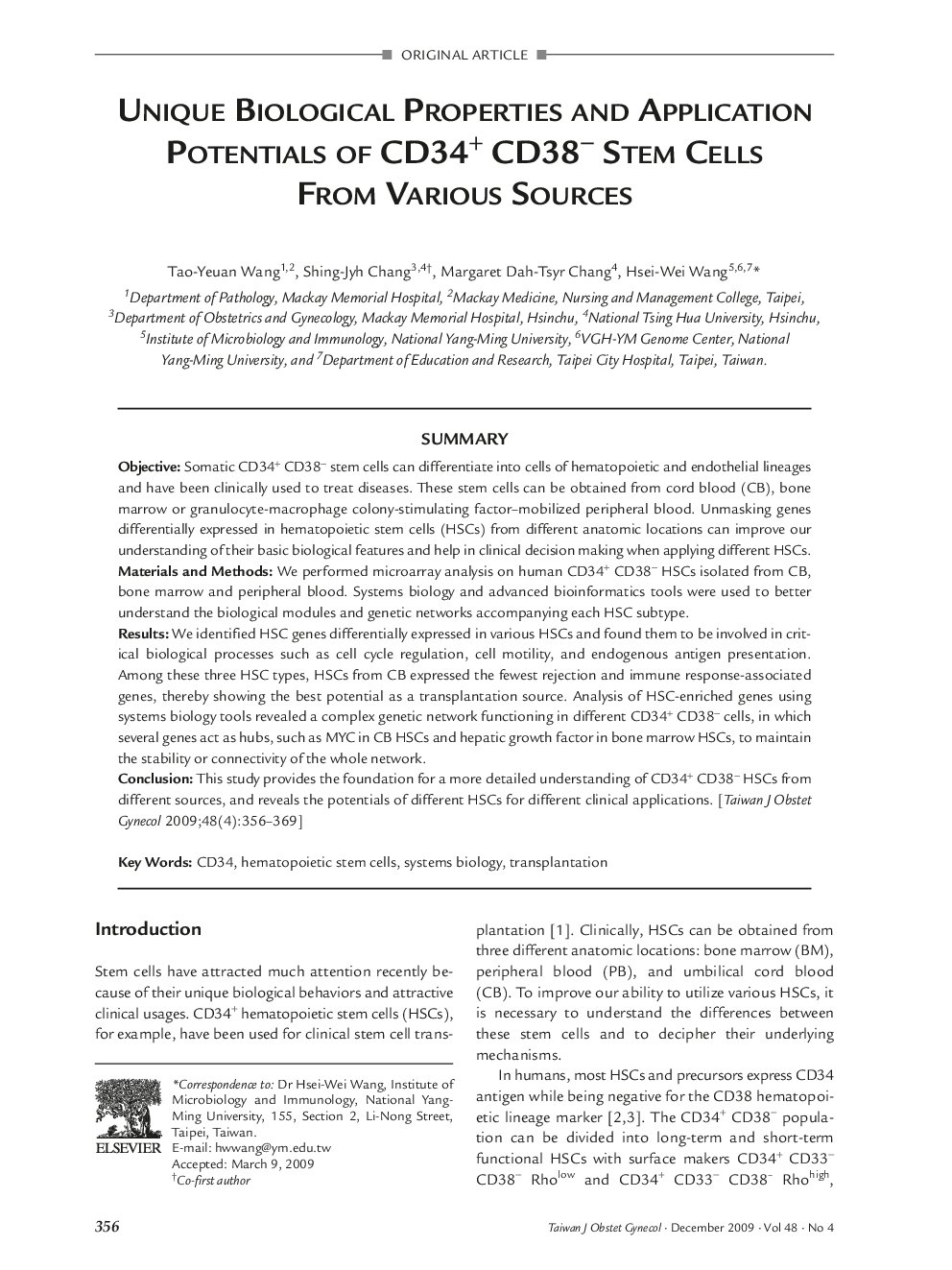| Article ID | Journal | Published Year | Pages | File Type |
|---|---|---|---|---|
| 3976173 | Taiwanese Journal of Obstetrics and Gynecology | 2009 | 14 Pages |
SummaryObjectiveSomatic CD34+ CD38− stem cells can differentiate into cells of hematopoietic and endothelial lineages and have been clinically used to treat diseases. These stem cells can be obtained from cord blood (CB), bone marrow or granulocyte-macrophage colony-stimulating factor–mobilized peripheral blood. Unmasking genes differentially expressed in hematopoietic stem cells (HSCs) from different anatomic locations can improve our understanding of their basic biological features and help in clinical decision making when applying different HSCs.Materials and MethodsWe performed microarray analysis on human CD34+ CD38− HSCs isolated from CB, bone marrow and peripheral blood. Systems biology and advanced bioinformatics tools were used to better understand the biological modules and genetic networks accompanying each HSC subtype.ResultsWe identified HSC genes differentially expressed in various HSCs and found them to be involved in critical biological processes such as cell cycle regulation, cell motility, and endogenous antigen presentation. Among these three HSC types, HSCs from CB expressed the fewest rejection and immune response-associated genes, thereby showing the best potential as a transplantation source. Analysis of HSC-enriched genes using systems biology tools revealed a complex genetic network functioning in different CD34+ CD38− cells, in which several genes act as hubs, such as MYC in CB HSCs and hepatic growth factor in bone marrow HSCs, to maintain the stability or connectivity of the whole network.ConclusionThis study provides the foundation for a more detailed understanding of CD34+ CD38− HSCs from different sources, and reveals the potentials of different HSCs for different clinical applications.
